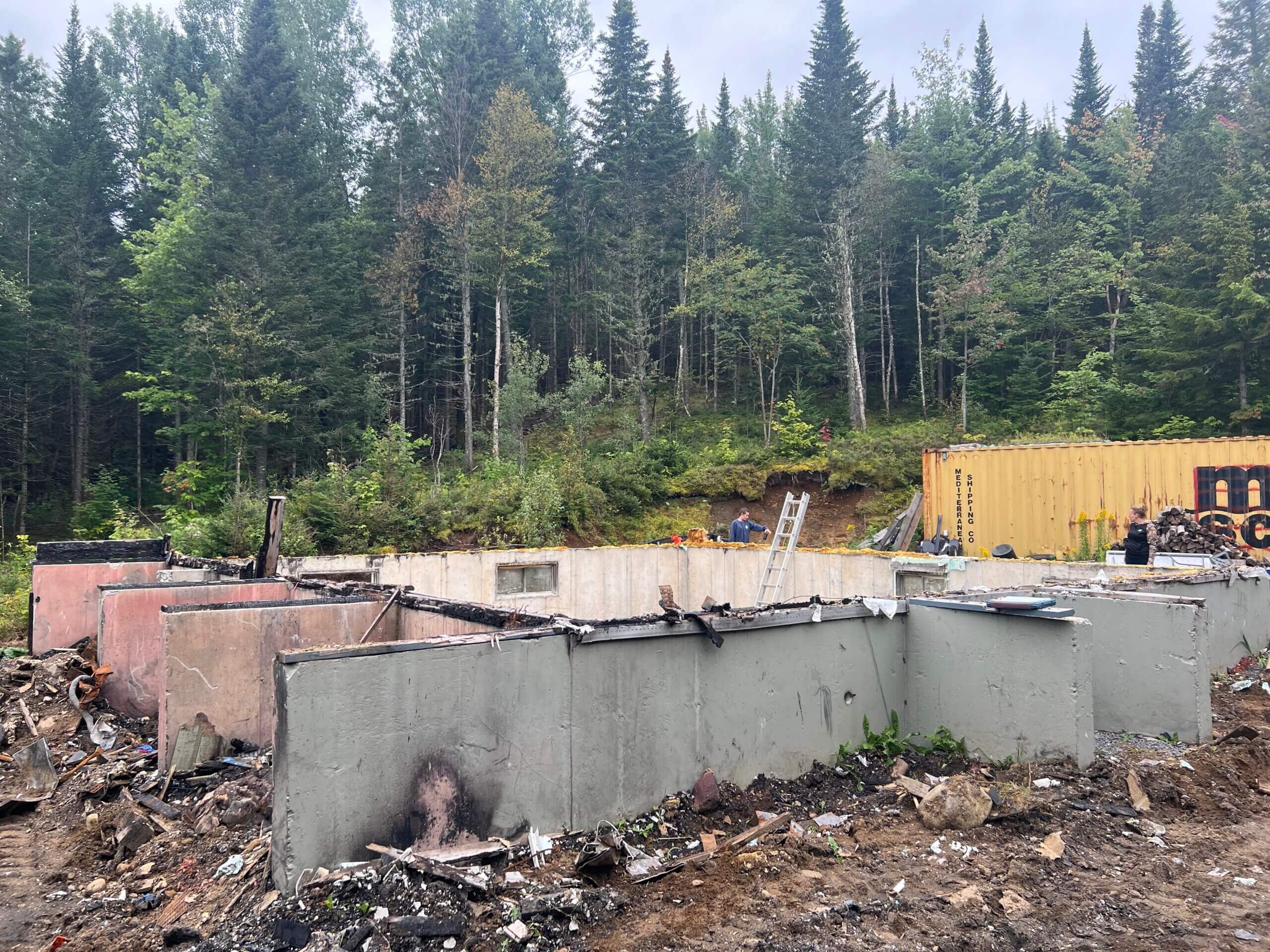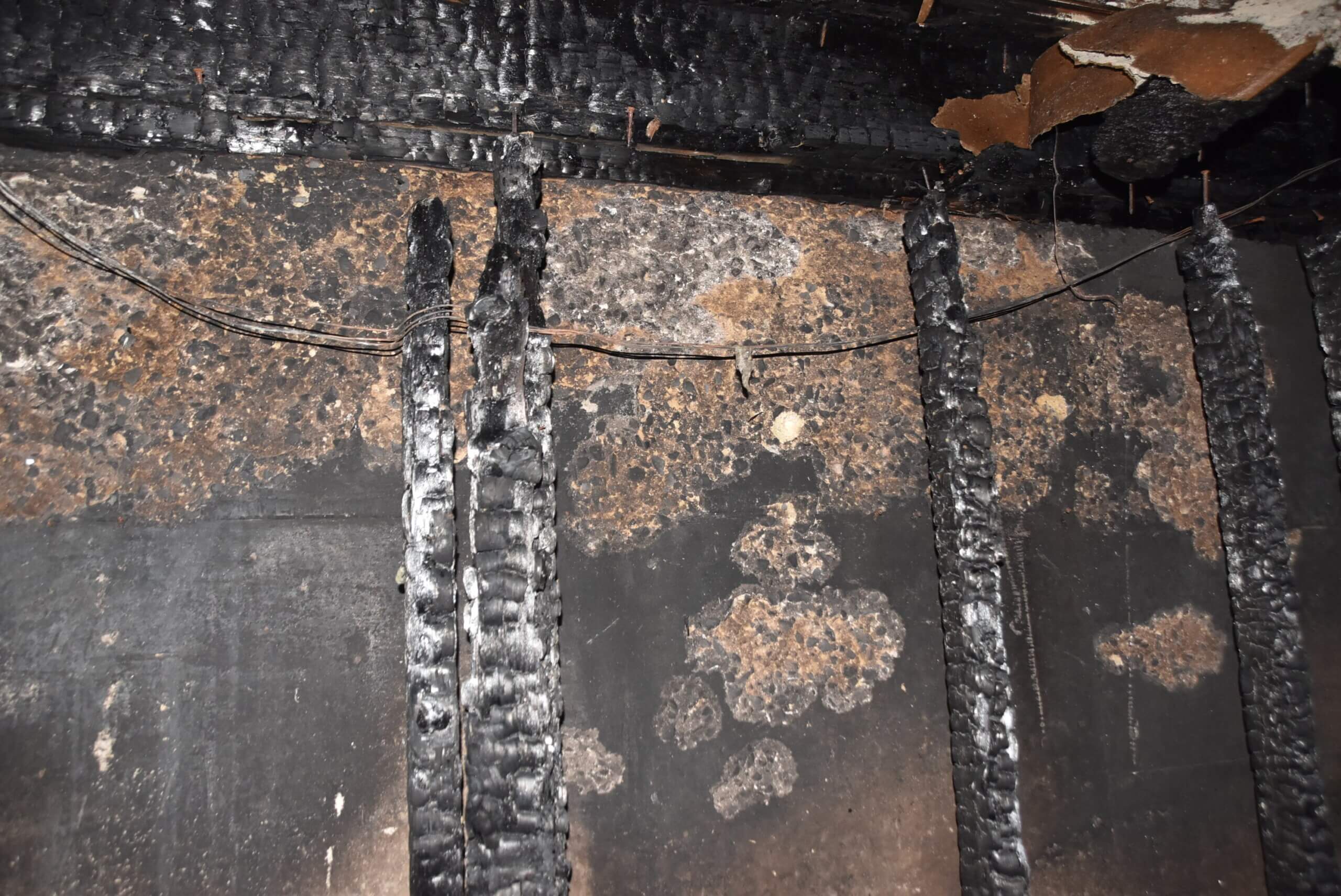To demolish, or not to demolish, that is the question
By Ashley-Lucy Ranaudo, P.Eng.
When a property is subjected to intense heat resulting from a fire, typically, damages to the wood superstructure are easily identifiable, but what about the concrete foundation?
To begin, let’s understand concrete; concrete consists of three main components, cement, aggregates, and water. When mixed, the cement and water become a paste, and this paste coats the aggregates. The mixture is plastic (malleable) at first, which allows for it to be placed in formwork, and harden into its designated form and purpose, in our case, into foundations.
When concrete foundations are subjected to intense heat, this heat can permanently damage the concrete’s properties. The most perceptible signs for concrete damage, post fire, can be grouped in two categories:
- Discoloration.
- Water change.
Discoloration
What is discoloration? It is exactly what it sounds like, the changing of the color of the concrete’s surface. When certain conditions are met during a fire, the surface of the exposed concrete becomes a pale-pinkish color, or a pale-yellowish color (Figure 1). This is irreversible damage to the iron compounds found in the concrete.
Interesting fact: Discoloration can start occurring at approximately 300 degrees Celsius, depending on the composition of the concrete. A similar melting temperature required to melt lead! But a much higher temperature than the burning point of gypsum board or most types of insulation used in a basement!

Figure 1: concrete discoloration in an extreme case
Water Change
What happens to the water in concrete when exposed to intense heat? The moisture (water) in concrete transforms into a vapour, the pressure from the vapour within the concrete causes the surface to spall, or chip away, leaving behind the characteristic indents of a spalled surface (Figure 2 : Surface spalling).

Figure 2: surface spalling
Interesting fact: an acoustic percussion tester is used to detect the voids within the concrete matrix. The typical sound of a non-damaged foundation is a high-pitched ring; whereas a damaged foundation will have a lower pitched clacking sound.
Both categories of damages compromise the structural integrity and durability of concrete foundations. Evidentially, once the visual, acoustic, and rebound assessments are complete, and none of the aforementioned damages are detected, the foundation can typically be reused to build a similar building.
There are instances where only small sections of the foundation are affected by intense heat. In these cases, local repairs are possible in order to preserve foundations. When it comes to the integrity of a foundation, sometimes the demolition of the superstructure can also cause damages to the foundation. Although not related to heat damage, some chipping, tipping, cracking, and excessive force from the demolition can result in damages that require a complete rebuild, as well.
When the majority of the foundation is damaged, whether it is related to heat damage or other aspects unrelated to fire damage, a complete replacement of the foundation should be considered for technical and economical reasons.
Note that, in some cases, especially when historical or Patrimonial factors are in play, repairs to larger areas are possible when the requirement of preservation of the structure surpasses the economic requirements.
Interesting fact: scorch marks and soot deposits typically do not determine structural damage; however, these patterns can help determine the areas where the fire ignited. Although soot can be difficult to remove, the presence or absence of it inside a crack, in the foundation, can also reveal information surrounding the crack’s occurrence.
For these reasons, post-fire assessments and repair recommendations of the foundation, are crucial to ensure the safety of occupants and the structural integrity of the building.
